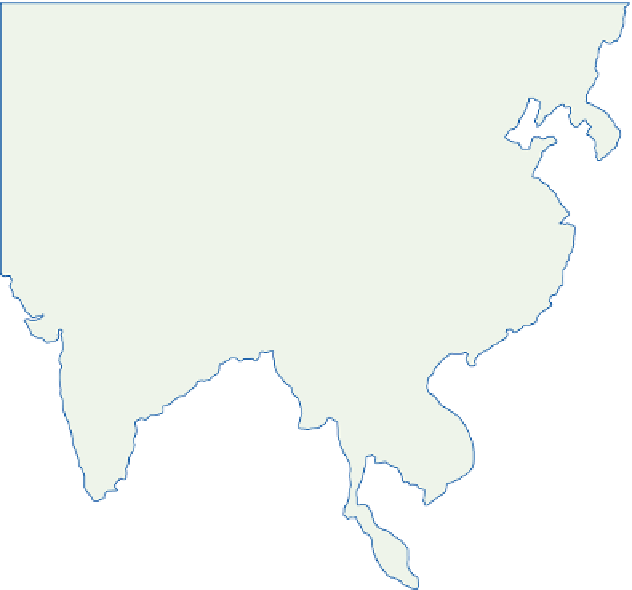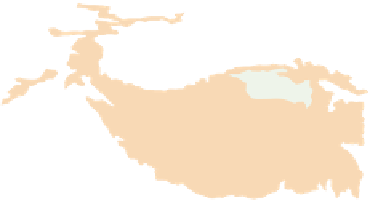Geoscience Reference
In-Depth Information
60°
70°
80°
90°
100°
110°
120°
130°
140°E
40°N
40°N
30°
30°
Tibetan Plateau
20°
un
20°
0 J
J
10°
10°
0°
0
1000
0°
km
80°
90°
100°
110°
120°
130°
Figure 11.24
Mean onset date of the summer monsoon over South and East Asia.
Source: After Tao Shi-yan and Chen Longxun. From Domrös and Peng (1988). Reproduced by permission of Professor Tao Shi-
yan and the Chinese Geographical Society. With kind permission of Springer Science & Business Media.
It must nevertheless be emphasized that it is
still uncertain how far these changes are caused by
events in the upper air or indeed whether the onset
of the monsoon initiates a readjustment in the
upper-air circulation. The presence of the Tibetan
Plateau is certainly of importance even if there is
no significant barrier effect on the upper airflow.
The plateau surface is strongly heated in spring
and early summer (Rn is about 180W m
-2
in May)
and nearly all of this is transferred via sensible
heat to the atmosphere. This results in the
formation of a shallow heat low on the plateau,
overlain, at about 450mb, by a warm anticy-
clone (see
Figure 7.1
). The plateau atmospheric
boundary layer now extends over an area about
twice the size of the plateau surface itself. Easterly
airflow on the southern side of the upper anti-
cyclone undoubtedly assists in the northward shift
of the subtropical westerly jet stream. At the same
time, the pre-monsoonal convective activity over
the southeastern rim of the plateau provides a
further heat source, by latent heat release, for the
upper anticyclone. The seasonal wind reversals
over and around the Tibetan Plateau have led
Chinese meteorologists to distinguish a 'Plateau
Monsoon' system, distinct from that over India.
4 Summer
By mid-July, monsoon air covers most of South
and Southeast Asia (see
Figure 11.23
), and in India
the Equatorial Trough is located at about 25
N
North of the Tibetan Plateau there is a rather weak
upper westerly current with a (subtropical) high
°























































